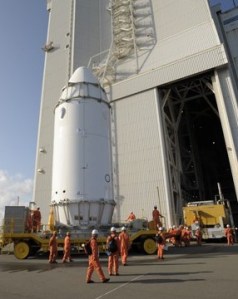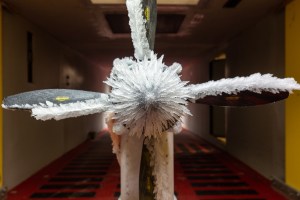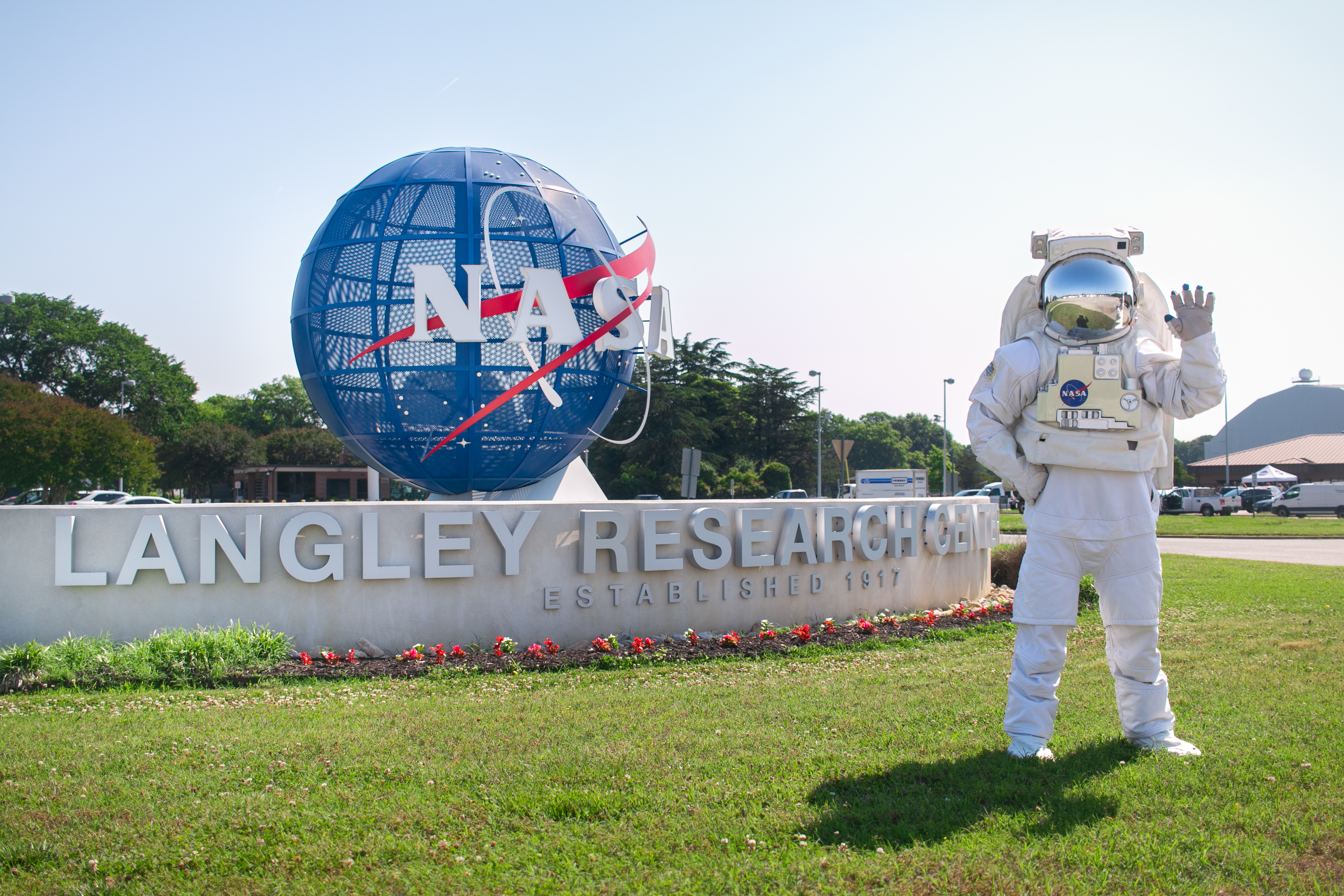55 Years Ago: Space Task Group Proposes Post-Apollo Plan to President Nixon
The Apollo 11 mission in July 1969 completed the goal set by President John F. Kennedy in 1961 to land a man on the Moon and return him safely to the Earth before the end of the decade. At the time, NASA planned nine more Apollo Moon landing missions of increasing complexity and an Earth […]
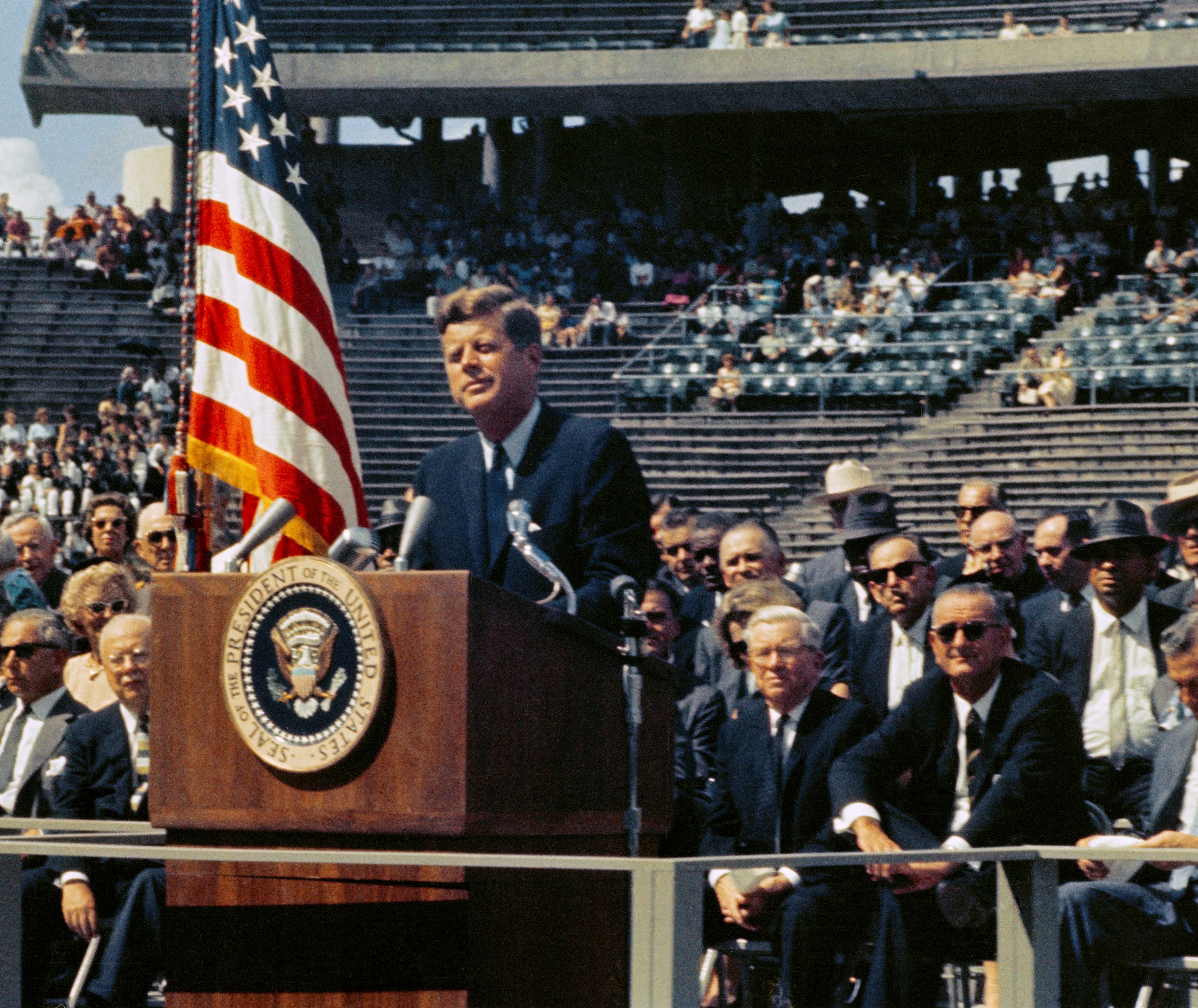
The Apollo 11 mission in July 1969 completed the goal set by President John F. Kennedy in 1961 to land a man on the Moon and return him safely to the Earth before the end of the decade. At the time, NASA planned nine more Apollo Moon landing missions of increasing complexity and an Earth orbiting experimental space station. No firm human space flight plans existed once these missions ended in the mid-1970s. After taking office in 1969, President Richard M. Nixon chartered a Space Task Group (STG) to formulate plans for the nation’s space program for the coming decades. The STG’s proposals proved overly ambitious and costly to the fiscally conservative President who chose to take no action on them.


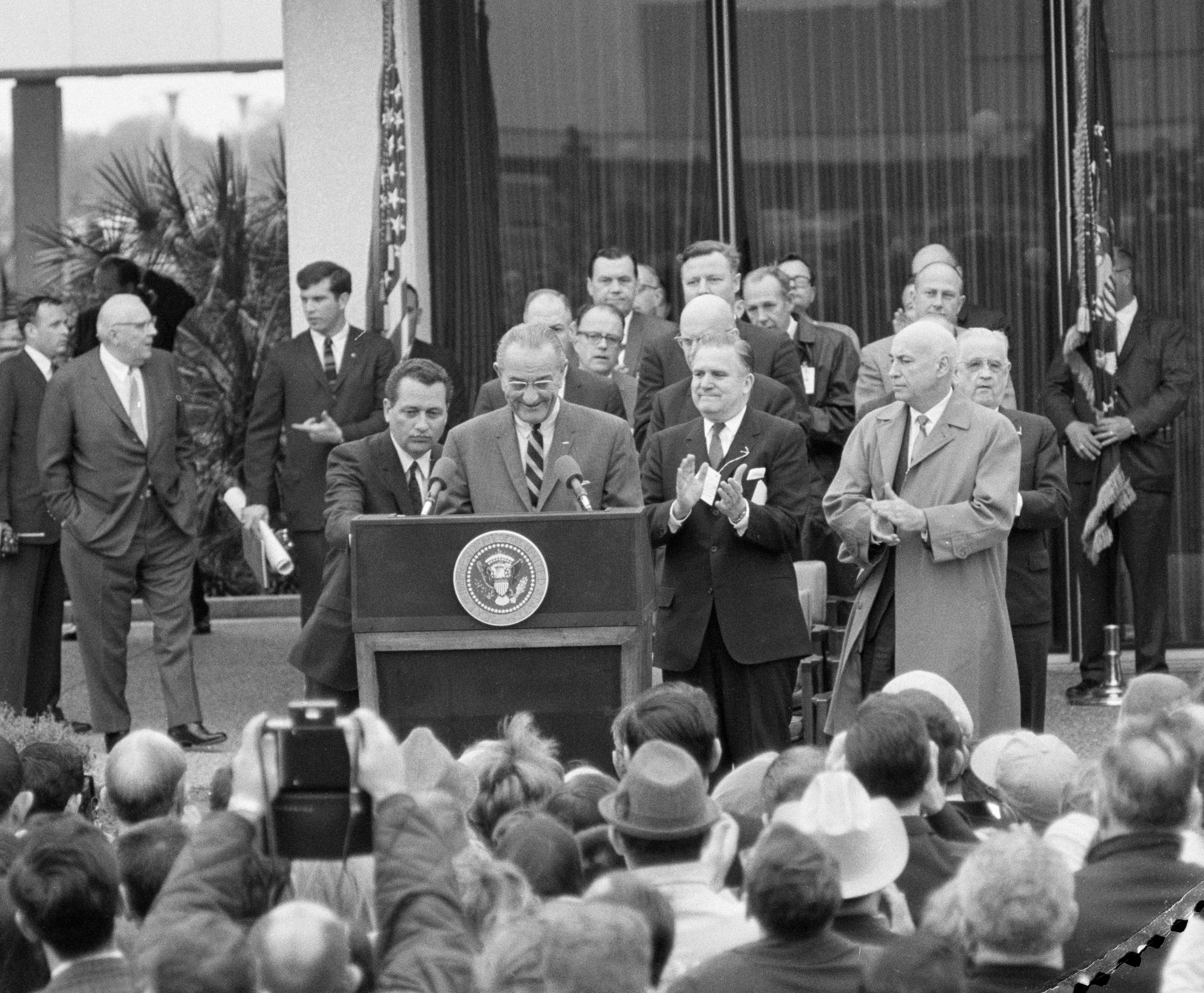
Left: President John F. Kennedy addresses a Joint Session of Congress in May 1961. Middle: President Kennedy addresses a crowd at Rice University in Houston in September 1962. Right: President Lyndon B. Johnson addresses a crowd during a March 1968 visit to the Manned Spacecraft Center, now NASA’s Johnson Space Center, in Houston.
On May 25, 1961, before a Joint Session of Congress, President John F. Kennedy committed the United States to the goal, before the decade was out, of landing a man on the Moon and returning him safely to the Earth. President Kennedy reaffirmed the commitment during an address at Rice University in Houston in September 1962. Vice President Lyndon B. Johnson, who played a leading role in establishing NASA in 1958, under Kennedy served as the Chair of the National Aeronautics and Space Council. Johnson worked with his colleagues in Congress to ensure adequate funding for the next several years to provide NASA with the needed resources to meet that goal.
Following Kennedy’s assassination in November 1963, now President Johnson continued his strong support to ensure that his predecessor’s goal of a Moon landing could be achieved by the stipulated deadline. But with increasing competition for scarce federal resources from the conflict in southeast Asia and from domestic programs, Johnson showed less interest in any space endeavors to follow the Apollo Moon landings. NASA’s annual budget peaked in 1966 and began a steady decline three years before the agency met Kennedy’s goal. From a budgetary standpoint, the prospects of a vibrant, post-Apollo space program didn’t look all that rosy, the triumphs of the Apollo missions of 1968 and 1969 notwithstanding.
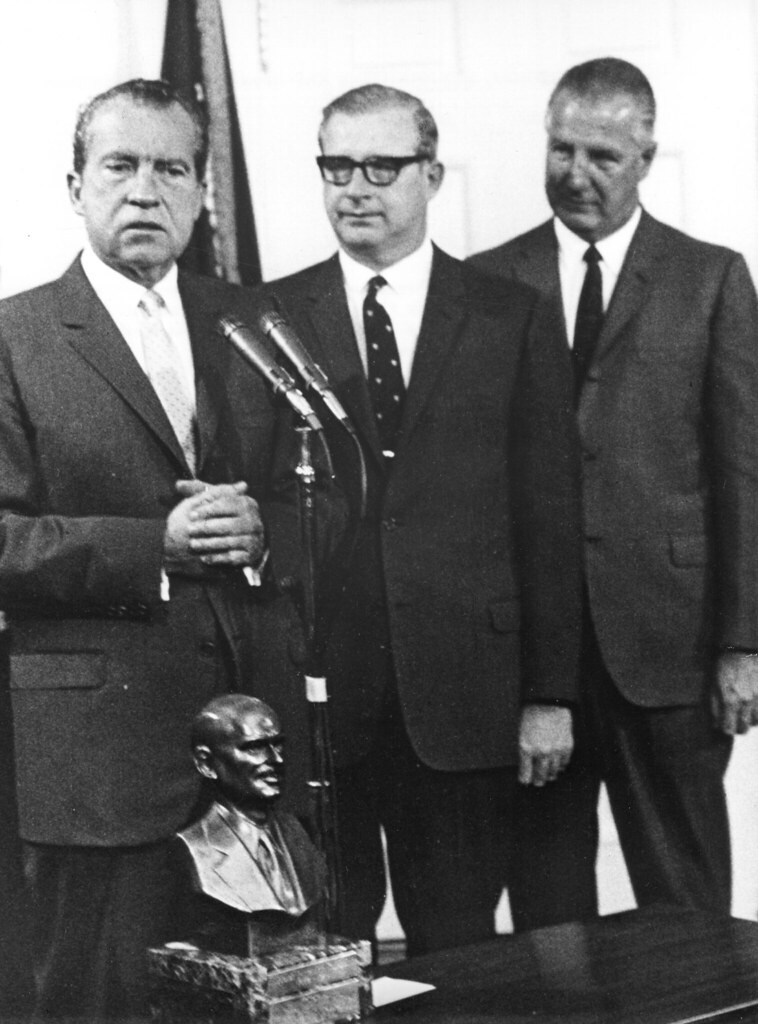
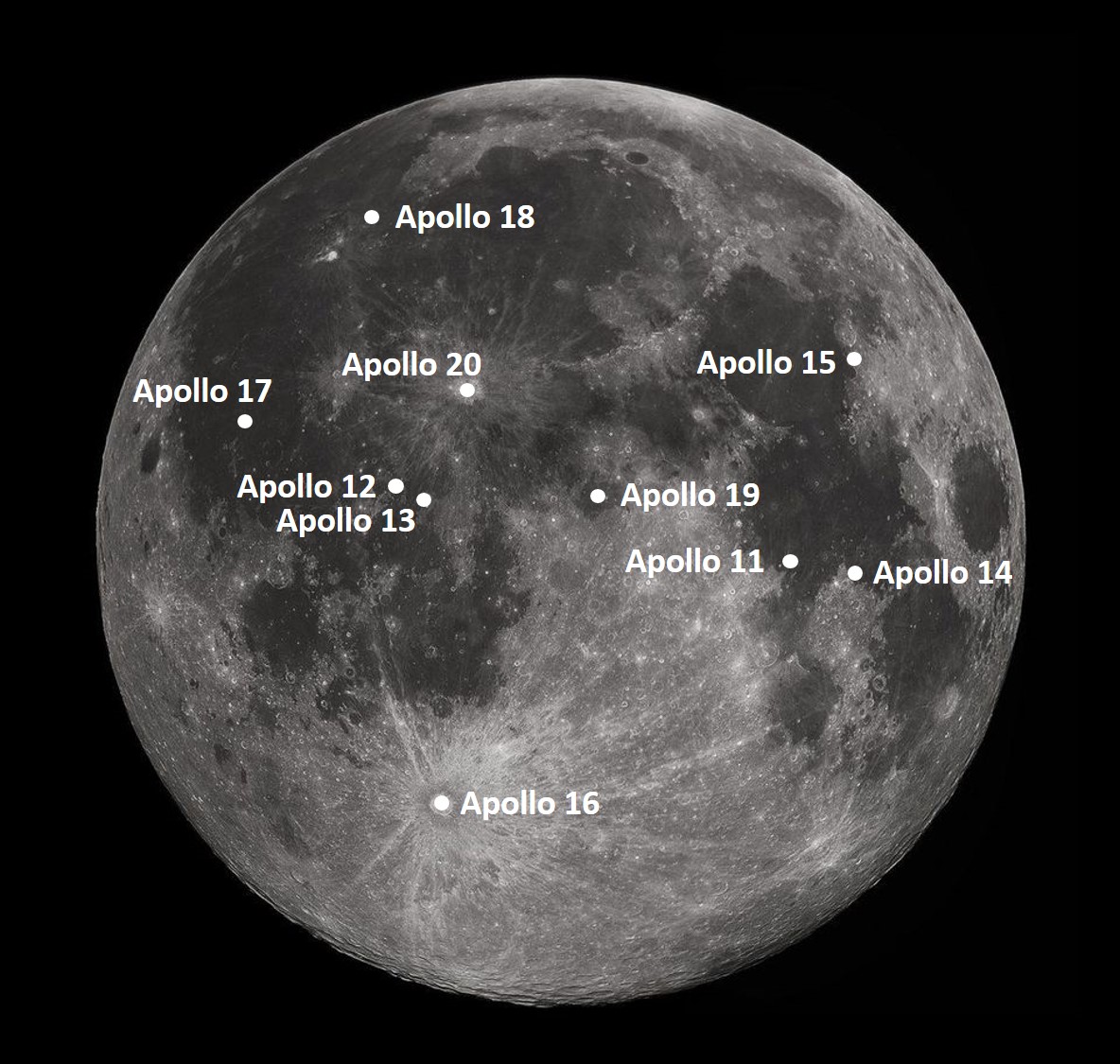
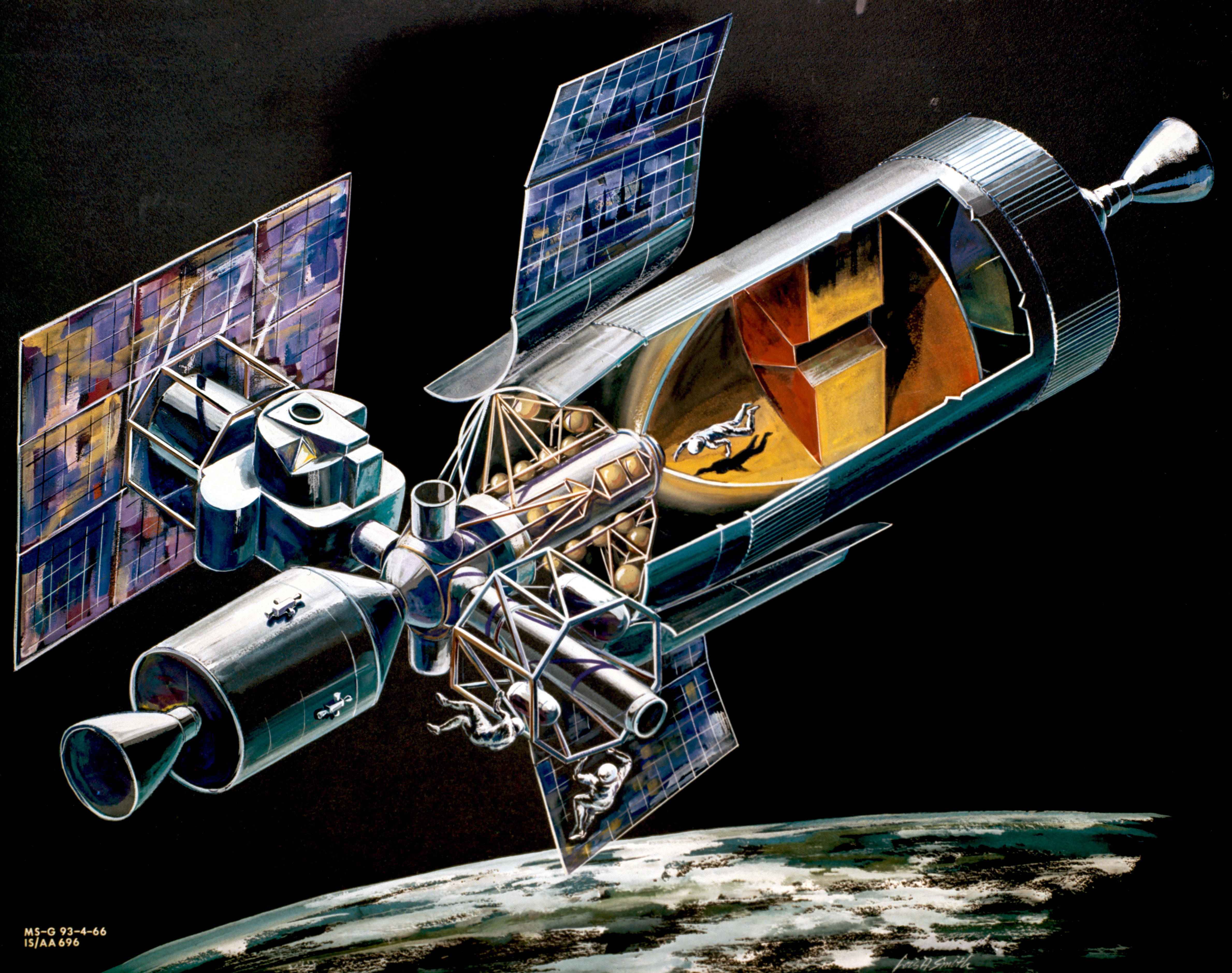
Left: On March 5, 1969, President Richard M. Nixon, left, introduces Thomas O. Paine as the NASA Administrator nominee, as Vice President Spiro T. Agnew looks on. Middle: Proposed lunar landing sites through Apollo 20, per August 1969 NASA planning. Right: An illustration of the Apollo Applications Program experimental space station that later evolved into Skylab.
Less than a month after assuming the Presidency in January 1969, Richard M. Nixon appointed a Space Task Group (STG), led by Vice President Spiro T. Agnew as the Chair of the National Aeronautics and Space Council, to report back to him on options for the American space program in the post-Apollo years. Members of the STG included NASA Acting Administrator Thomas O. Paine (confirmed by the Senate as administrator on March 20), the Secretary of Defense, and the Director of the Office of Science and Technology. At the time, the only approved human space flight programs included lunar landing missions through Apollo 20 and three long-duration missions to an experimental space station based on Apollo technology that evolved into Skylab.
Beyond a general vague consensus that the United States human space flight program should continue, no approved projects existed once these missions ended by about 1975. With NASA’s intense focus on achieving the Moon landing within President Kennedy’s time frame, long-term planning for what might follow the Apollo Program garnered little attention. During a Jan. 27, 1969, meeting at NASA chaired by Acting Administrator Paine, a general consensus emerged that the next step after the Moon landing should involve the development of a 12-person earth-orbiting space station by 1975, followed by an even larger outpost capable of housing up to 100 people “with a multiplicity of capabilities.” In June, with the goal of the Moon landing almost at hand, NASA’s internal planning added the development of a space shuttle by 1977 to support the space station, the development of a lunar base by 1976, and the highly ambitious idea that the U.S. should prepare for a human mission to Mars as early as the 1980s. NASA presented these proposals to the STG for consideration in early July in a report titled “America’s Next Decades in Space.”

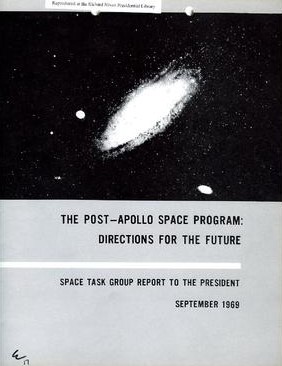
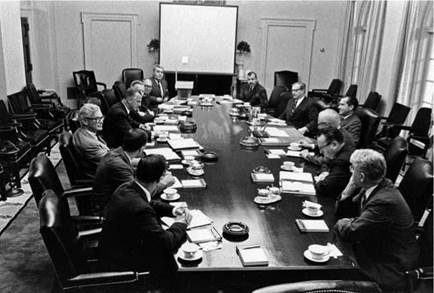
Left: President Richard M. Nixon, right, greets the Apollo 11 astronauts aboard the U.S.S. Hornet after their return from the Moon. Middle: The cover page of the Space Task Group (STG) Report to President Nixon. Right: Meeting in the White House to present the STG Report to President Nixon. Image credit: courtesy Richard Nixon Presidential Library and Museum.
Still bathing in the afterglow of the successful Moon landing, the STG presented its 29-page report “The Post-Apollo Space Program: Directions for the Future” to President Nixon on Sep. 15, 1969, during a meeting at the White House. In its Conclusions and Recommendations section, the report noted that the United States should pursue a balanced robotic and human space program but emphasized the importance of the latter, with a long-term goal of a human mission to Mars before the end of the 20th century. The report proposed that NASA develop new systems and technologies that emphasized commonality, reusability, and economy in its future programs. To accomplish these overall objectives, the report presented three options:
Option I – this option required more than a doubling of NASA’s budget by 1980 to enable a human Mars mission in the 1980s, establishment of a lunar orbiting space station, a 50-person Earth orbiting space station, and a lunar base. The option required a decision by 1971 on development of an Earth-to-orbit transportation system to support the space station. The option maintained a strong robotic scientific and exploration program.
Option II – this option maintained NASA’s budget at then current levels for a few years, then anticipated a gradual increase to support the parallel development of both an earth orbiting space station and an Earth-to-orbit transportation system, but deferred a Mars mission to about 1986. The option maintained a strong robotic scientific and exploration program, but smaller than in Option I.
Option III – essentially the same as Option II but deferred indefinitely the human Mars mission.
In separate letters, both Agnew and Paine recommended to President Nixon to choose Option II.



Left: Illustration of a possible space shuttle, circa 1969. Middle: Illustration of a possible 12-person space station, circa 1969. Right: An August 1969 proposed mission scenario for a human mission to Mars.
The White House released the report to the public at a press conference on Sep. 17 with Vice President Agnew and Administrator Paine in attendance. Although he publicly supported a strong human spaceflight program, enjoyed the positive press he received when photographed with Apollo astronauts, and initially sounded positive about the STG options, President Nixon ultimately chose not to act on the report’s recommendations. Nixon considered these plans too grandiose and far too expensive and relegated NASA to one America’s domestic programs without the special status it enjoyed during the 1960s. Even some of the already planned remaining Moon landing missions fell victim to the budgetary axe.
On Jan. 4, 1970, NASA had to cancel Apollo 20 since the Skylab program needed its Saturn V rocket to launch the orbital workshop. In 1968, then NASA Administrator James E. Webb had turned off the Saturn V assembly line and none remained beyond the original 15 built under contract. In September 1970, reductions in NASA’s budget forced the cancellation of two more Apollo missions, and in 1971 President Nixon considered cancelling two more. He reversed himself and they flew as Apollo 16 and Apollo 17 in 1972, the final Apollo Moon landing missions.


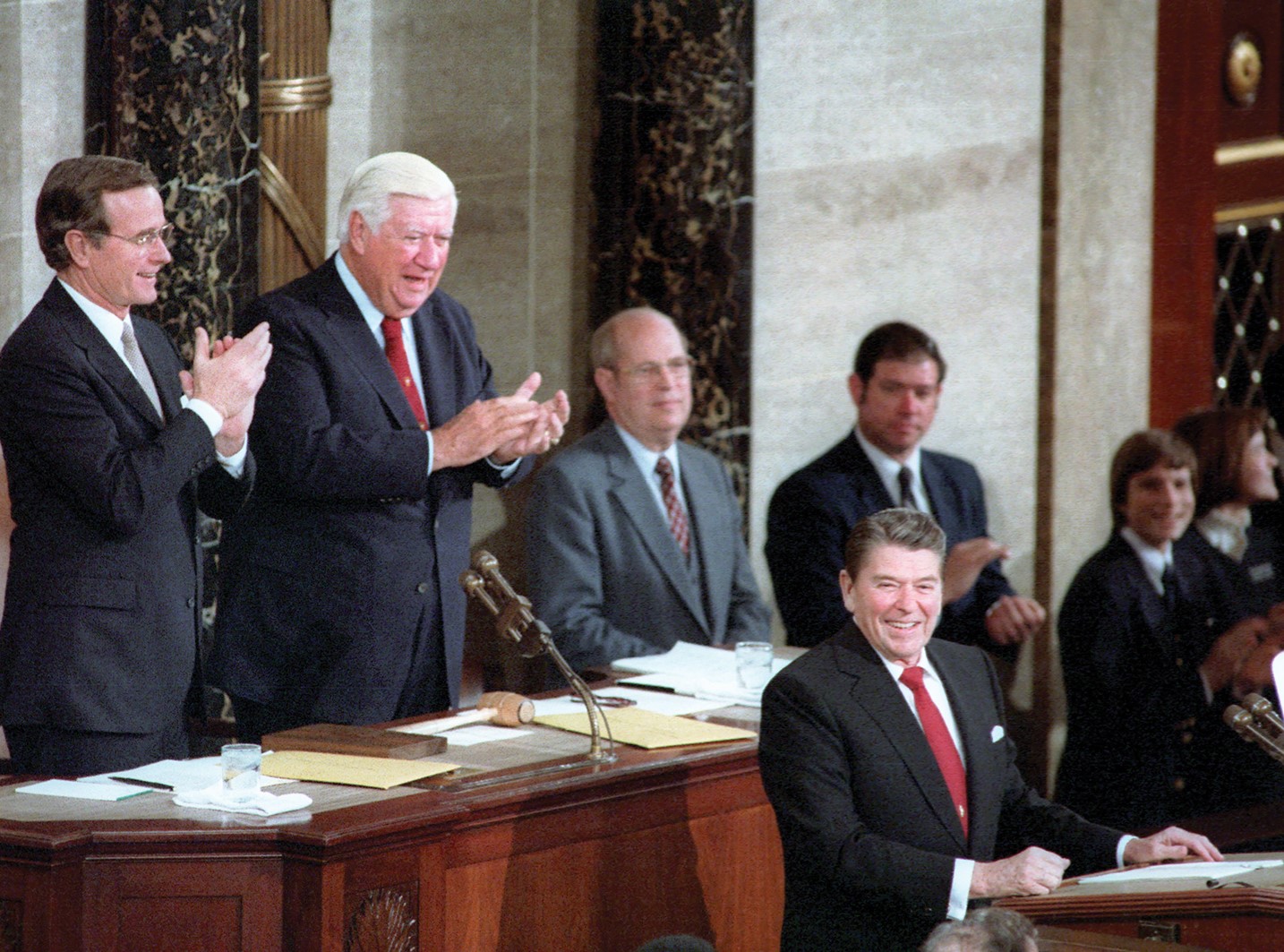
Left: NASA Administrator James C. Fletcher, left, and President Richard M. Nixon announce the approval to proceed with space shuttle development in 1972. Middle: First launch of the space shuttle in 1981. Right: In 1984, President Ronald W. Reagan directs NASA to build a space station.
More than two years after the STG submitted its report, in January 1972 President Nixon directed NASA Administrator James C. Fletcher to develop the Space Transportation System, the formal name for the space shuttle, the only element of the recommendations to survive the budgetary challenges. NASA anticipated the first orbital flight of the program in 1979, with the actual first flight occurring two years later. Twelve years elapsed after Nixon’s shuttle decision when President Ronald W. Reagan approved the development of a space station, the second major component of the STG recommendation. 14 years later, the first element of that program reached orbit. In those intervening years, NASA had redesigned the original American space station, leading to the development of a multinational orbiting laboratory called the International Space Station. Humans have inhabited the space station continuously for the past quarter century, conducting world class and cutting edge scientific and engineering research. Work on the space station helps enable future programs, returning humans to the Moon and later sending them on to Mars and other destinations.
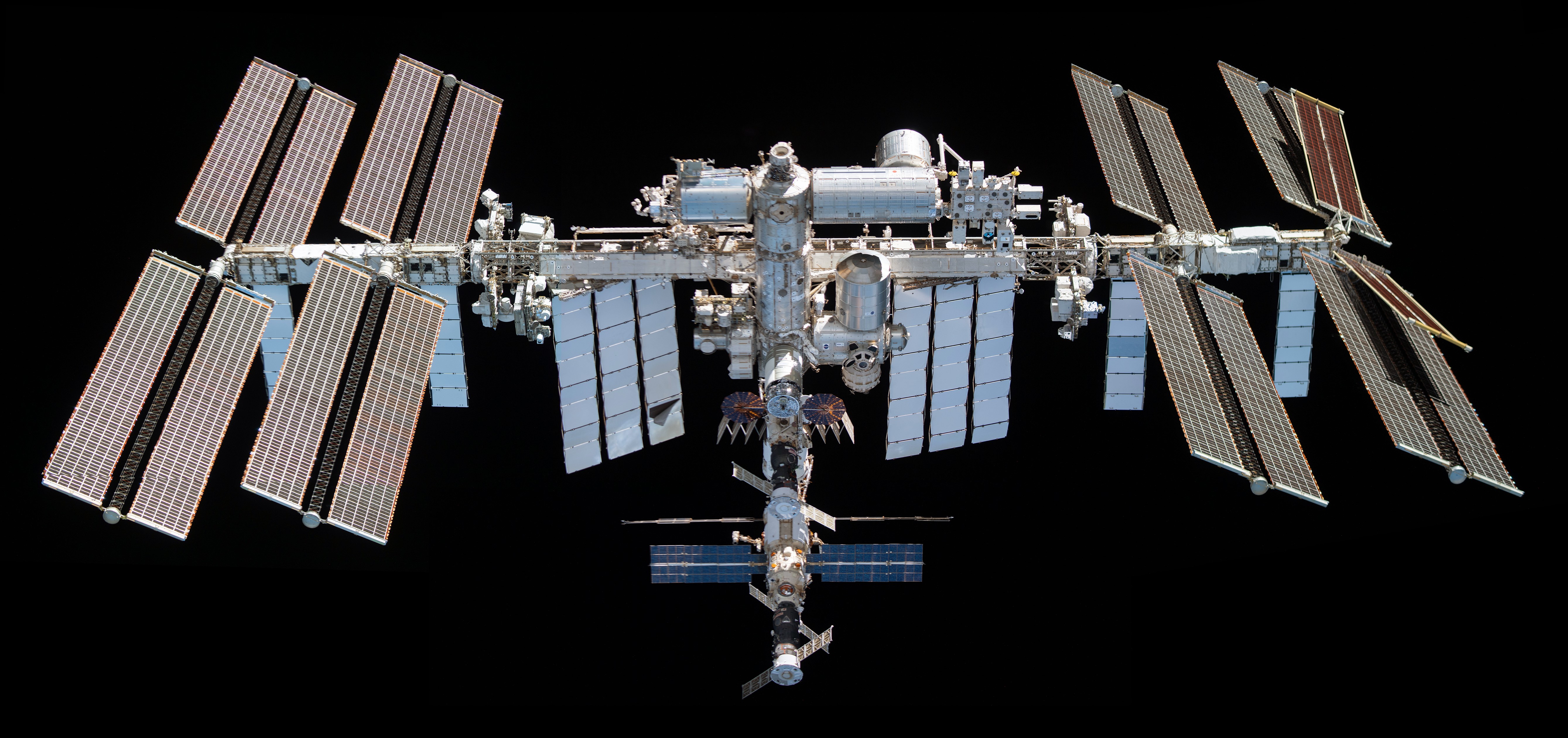
The International Space Station as it appeared in 2021.
What's Your Reaction?































